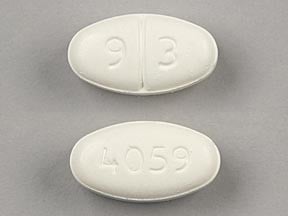
Cefadroxil Coupons & Savings Card – Discount Prices from $32.97
My prescription
Edit
1GM, Cefadroxil (14 Tablets)
Select pharmacy

CVS
$38.12
COUPON PRICE
Walgreens
$32.97
COUPON PRICE
Walmart
$48.91
COUPON PRICE
Albertsons
$94.81
COUPON PRICECefadroxil savings card
Show this card to your pharmacist
Walgreens
$32.97
BIN
ID
PCN
GRP
015995
LHEX643360
GDC
GDRX
Powered by
Related cephalosporin antibiotics prescriptions
More prescriptions for urinary tract infection
Related cephalosporin antibiotics prescriptions
More prescriptions for urinary tract infection
Cefadroxil dosage forms
Dosage Quantity Price from Per unit 1GM 14 Tablets $38.12 $2.72 1GM 50 Tablets $89.85 $1.80
| Dosage | Quantity | Price from | Per unit |
|---|---|---|---|
| 1GM | 14 Tablets | $38.12 | $2.72 |
| 1GM | 50 Tablets | $89.85 | $1.80 |
Cefadroxil Warnings
The following information outlines crucial safety warnings associated with the use of cefadroxil. It is essential to understand these risks and consult your healthcare provider if you have any questions or concerns.
Allergic Reactions: Notify your healthcare provider if you have ever experienced an allergic reaction to penicillin or cephalosporin antibiotics, such as difficulty breathing or swelling of the face and throat. Cefadroxil may not be suitable for you, and your provider might suggest an alternative antibiotic. If such allergic reactions occur after starting cefadroxil, seek medical attention immediately.
C. Difficile Diarrhea: Rarely, antibiotics like cefadroxil can lead to a serious bacterial infection causing severe diarrhea, possibly occurring up to two months post-treatment. If you experience severe diarrhea with watery stools after completing the medication, consult your healthcare provider.
Kidney Issues: Cefadroxil is eliminated from the body via the kidneys. Impaired kidney function can result in an accumulation of the drug, potentially leading to complications. Your healthcare provider or pharmacist will adjust your dose based on kidney function tests if necessary, especially if you have a history of kidney problems or are aged 65 or older.
Drug-Resistant Bacteria: Cefadroxil should be used only for bacterial infections. Using antibiotics when unnecessary can promote the development of drug-resistant bacteria, which are difficult to treat.
New Infections: Cefadroxil does not eliminate all bacteria, and some may survive, multiply, and lead to a "superinfection." Should you develop a new fever, feel worse while on cefadroxil, or not improve after completing the course, contact your healthcare provider promptly.
No specific contraindications for cefadroxil have been provided. Always adhere to your healthcare provider’s instructions and report any unusual symptoms or concerns.
Cefadroxil Side Effects
Common side effects:
- Stomach upset
- Nausea
- Vomiting
- Diarrhea
- Indigestion
Less common but important to monitor:
- Joint pain
- Fever
- Genital itching
- Yeast infections
- Oral thrush
Serious side effects:
- Severe allergic reaction (rash, itching, swelling of the face or throat, severe dizziness, trouble breathing)
- Severe skin reactions (painful rashes or blisters)
- Liver problems (persistent nausea, loss of appetite, abdominal pain, yellowing of the eyes or skin, dark urine)
- Kidney issues (change in urine output)
- C. difficile infection (continuous diarrhea, severe abdominal pain, blood or mucus in stool)
Cefadroxil Interactions
Interactions with high risk of serious adverse effects and should be avoided:
- Cholera Vaccine, Live
- Warfarin
Interactions with moderate risk that may require dose adjustment, closer monitoring, or timing changes:
- Desogestrel
- Dienogest
- Drospirenone
- Estradiol
- Ethinyl Estradiol
- Ethynodiol
- Gestodene
- Levonorgestrel
- Mestranol
- Nomegestrol
- Norethindrone
- Norgestimate
- Norgestrel
